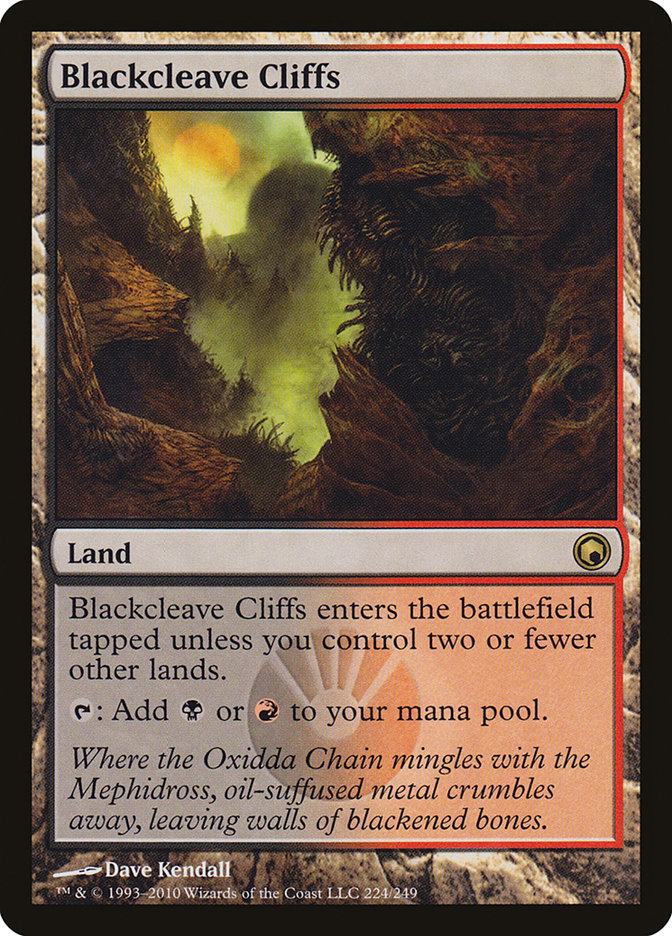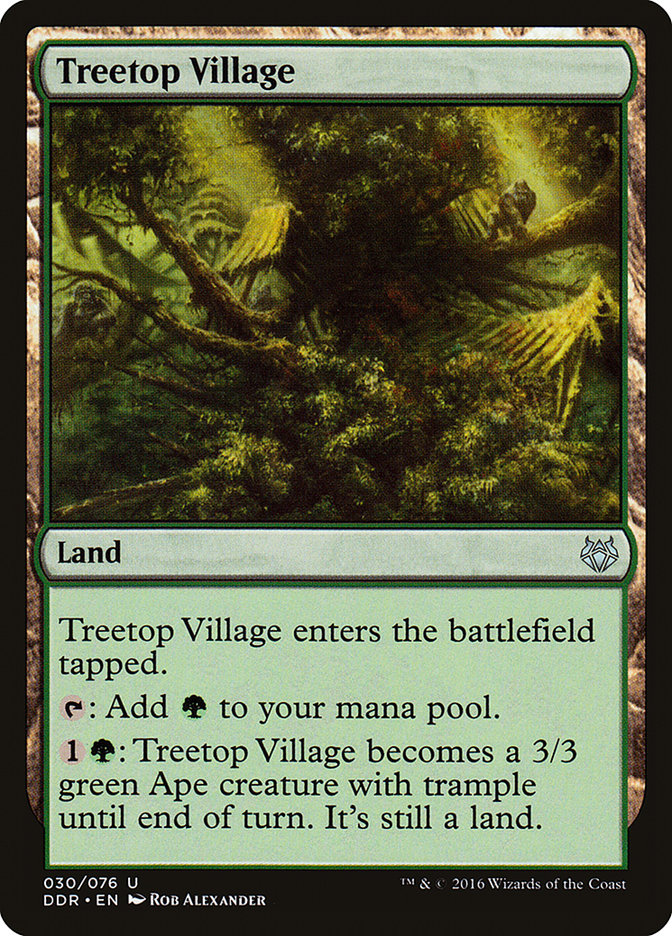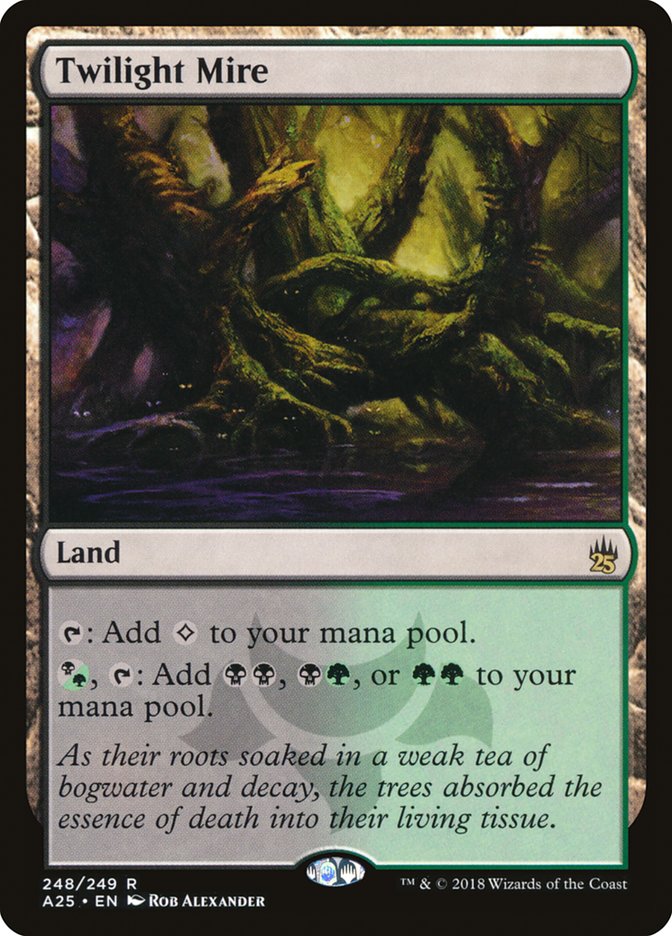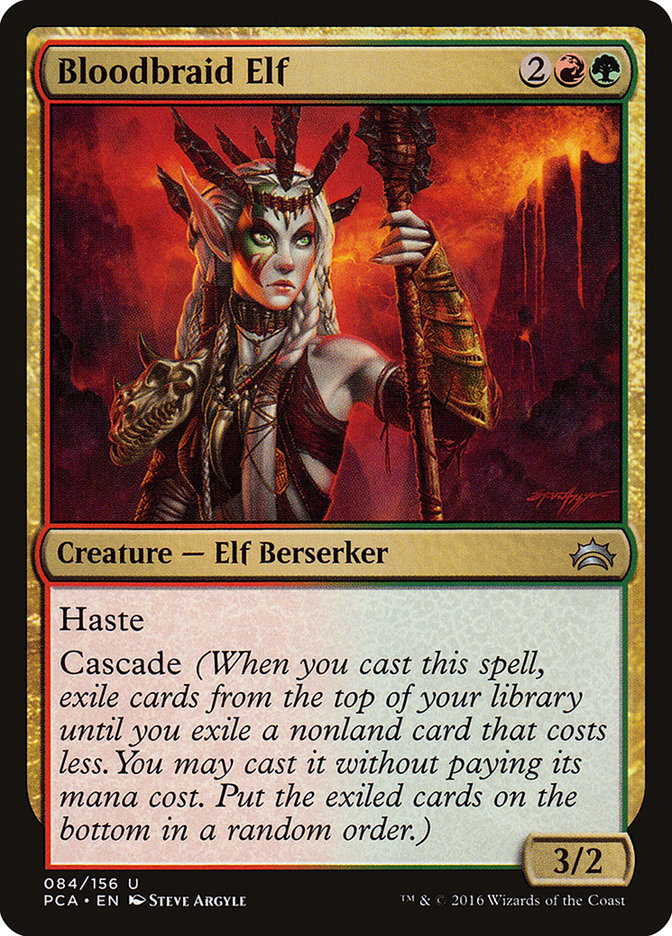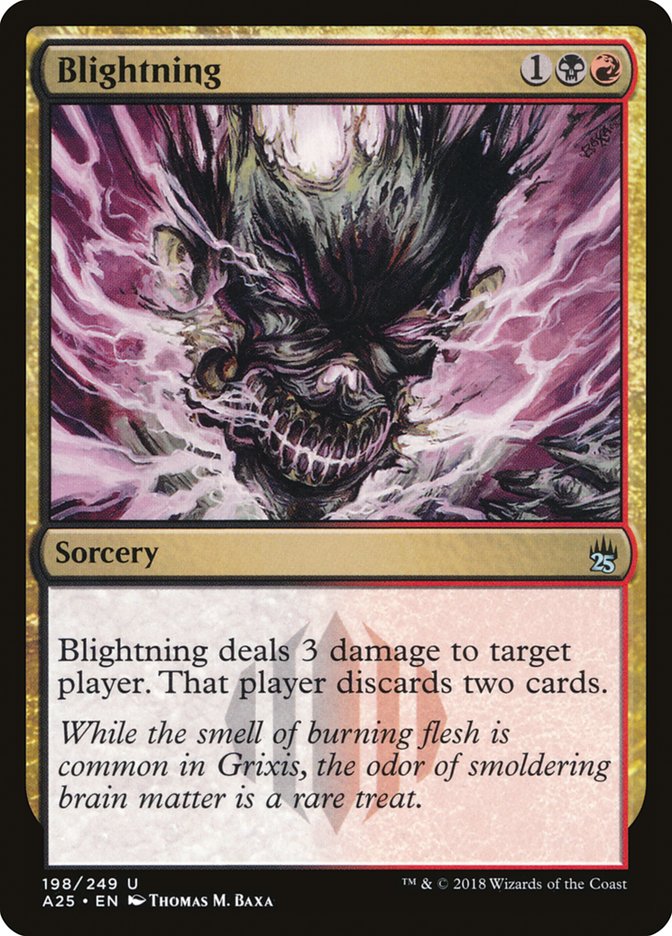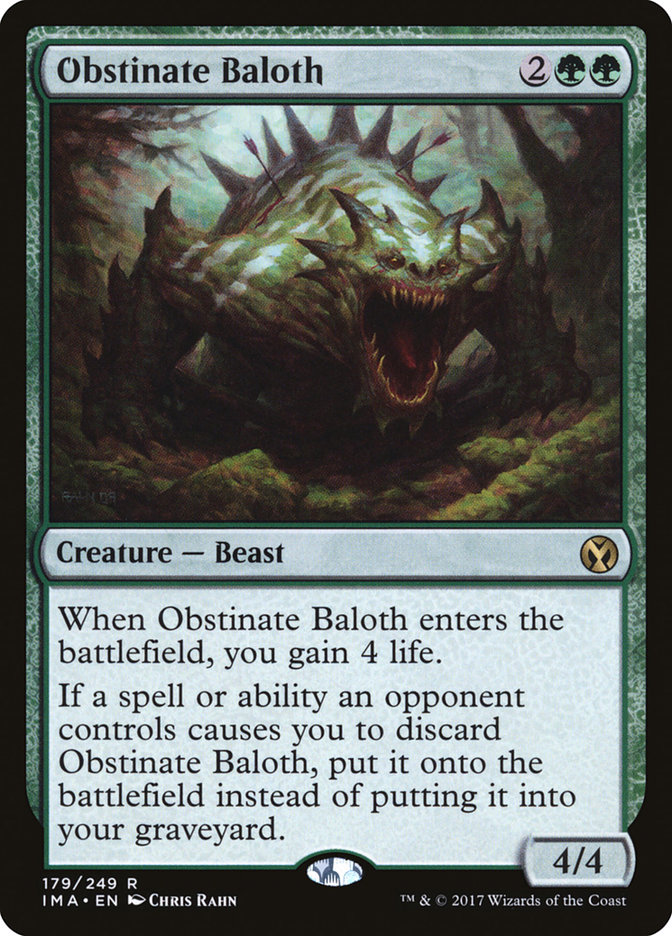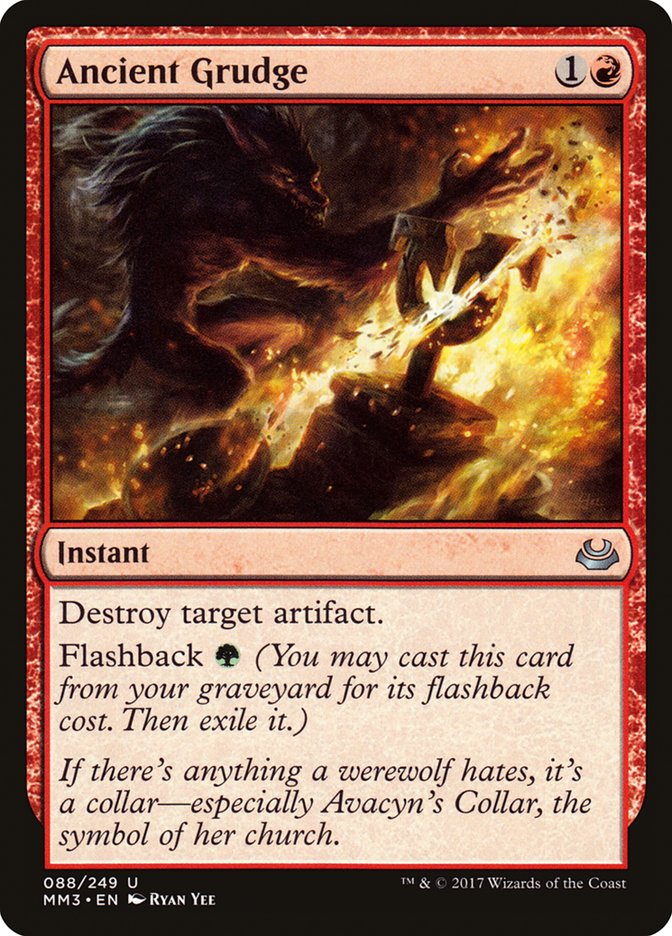Last week, I alluded to the fact that I would start my Modern preparation
for GP Phoenix, but the reality is my Modern preparation had already begun
weeks prior as I was helping Reid Duke, Logan Nettles, Gabriel Nassif,
Brock Parker, and Corey Burkhart prepare for the Magic Online Championship.
I still haven’t had the opportunity to check the standings, so I’ll just
assume they all did great and my help did wonders for each of them.
With the return of Bloodbraid Elf, it was obvious Jund needed to be
explored. Fortunately I’ve always loved that deck so I had a great
opportunity to be useful and have some fun with my old flame.
Creatures (14)
Planeswalkers (4)
Lands (25)
Spells (17)

I was shipped a list that looked very little like the one above, but after
one playing one MTGO League the biggest piece of advice I could give my
team was that the average converted mana cost of the deck was simply too
high. My recommendation was to include two copies of Thoughtseize and two
copies of Fatal Push to lower the overall converted mana cost as I always
wanted to have a play on turn 1, and I often wanted other one-casting cost
spells in my hand since I have so many enters-the-battlefield tapped lands
and a high average converted mana cost.
Modern is a huge format and you can basically play any land printed in the
last fifteen years, so why does Jund always play four Blackcleave Cliffs?
Burn is enough of the metagame and that matchup is problematic enough that
Blackcleave Cliffs entering the battlefield untapped and always being able
to provide black and red mana turn 1 is incredibly valuable (you turn on
turn 1 Inquisition of Kozilek and Lightning Bolt pain-free!). This is
strong evidence to support the theory that casting spells on turn 1 in
Modern is correlated to succeeding. I was a little worried about
Thoughtseize being a bad topdeck against the mirror in long games, but I’ve
actually found enough of the games in the mirror are decided early by
non-interactive openings like Thoughtseize into Dark Confidant or Liliana
of the Veil, both of which can run away with things. I also like the fact
that Thoughtseize can trade one-for-one with Bloodbraid Elf, a huge win for
the Thoughtseize player should you able pull it off.
Another innovation here is four copies of Treetop Village. With the
unbannings of Jace and Bloodbraid, we all know some of the matchups in
Modern are going to be midrange grindfests where resource advantage and
disruption is key. One way to win these matchups is to get a planeswalker
down early and generate advantage each turn with it. I’ve always felt like
if I have a Treetop Village on an empty battlefield, the opponent is in a
no-win situation. They can’t turn-3 Liliana or turn-4 Jace because I can
just attack the planeswalker’s loyalty, which substantially weakens each
card (either Liliana can’t kill a creature next turn or the Jace has the
option to Brainstorm and die). It’s possible my opponent could see the
Treetop and tap out for Jace and plus two, but when this happens the game
heavily favors the Jund player since they can kill Jace with a Maelstrom
Pulse at one-for-one or any combination of Lightning Bolt, Kolaghan’s
Command, and Bloodbraid Elf can cobble together enough damage to make this
a disadvantageous play. It makes a world of difference to me, even the
difference between winning and losing, if I have Treetop Village or Raging
Ravine on the battlefield against someone with Jace or Liliana in the early
turns. I wasn’t born yesterday, so I’m coming prepared for someone to have
one of those cards at Phoenix.
Also, when a land turns into an Ape, it’s pretty cool.
As someone who is a firm hater of Twilight Mire, I’ve still included two
here to support Scavenging Ooze and to help fix my mana for Liliana of the
Veil. One common play is you lead with a Treetop Village turn 1 and often
if you decide you don’t want to play a creature turn 2 into removal or you
don’t have one, it’s in your best interest to play another
enters-the-battlefield tapped land which almost always means another
Treetop Village or Raging Ravine, I hate getting stuck with these two as my
first two lands and being unable to cast Liliana. The time came when I had
to choose between Twilight Mire or Wooded Foothills and the biggest concern
here was Blood Moon, as I want to improve my chances to beat Blood Moon
while also consistently being able to cast my own spells.
As a tournament player you should recognize that priority number one should
always be making your deck as consistent as possible so you still retain
basic deck functionality against weaker players, weaker decks, and weaker
draws. It’s an EV tragedy if your opponent is mana screwed, but you have a
Treetop Village, Raging Ravine, Blackcleave Cliffs, and two Liliana of the
Veil in hand and you’re floundering around instead of slamming the door and
getting ready for the next game. I liked the idea of having more Wooded
Foothills to fetch for basic Forest, but with this specific build of Jund I
decided the best option was to just play Seal of Primordium in the
sideboard if I wanted to help my chances against Blood Moon.
Getting a Forest out is a huge win and I definitely can and do still try to
do that in any matchup where I suspect Blood Moon is present, but Forest
unlocks Bloodbraid Elf and it’s not tough to win once you’re slamming those
every turn. It’s possible the one Bloodstained Mire should also be a Wooded
Foothills for this reason but my logic was Verdant Catacombs is the best,
as it can get all my lands that make non-red under Blood Moon so obviously
I play four of those. But beyond that, it’s uncertain which I would prefer
in a game between a basic Forest and a basic Swamp that I might as well
give myself the opportunity to make a more informed decision during a game
when I draw both.
Optionality is incredible for strong players. Don’t ever forget that.
Sometimes we take for granted the impact one of a card has on the overall
outcome of a match, but Constructed matches are won and lost on thin
margins, so if you see any space in a game or on your decklist where you
can produce value do not hesitate to seize it.
The biggest thing I learned from playing this deck is that Kolaghan’s
Command is one of the best cards in Modern, and Jund lists aren’t playing
as many as they should. When Bloodbraid Elf was legal in Standard, you
would hear constant complaints about how lucky people were to cascade
Bloodbraid Elf into Blightning and it always felt like Blightning did a
little bit too much. Nobody is impressed by Mind Rot, but the three damage
was used to kill planeswalkers, and when you have creature-lands and you’re
rich with 3/2 haste creatures, the extra damage you get can very easily
translate into game wins.
I felt Kolaghan’s Command was a total game changer, a mandatory include in
large numbers in the main deck, and I tried to pressure my team to play
either three or four. I think it gives you huge swings in matchups like
Lantern Control, B/R Hollow One, Affinity, Humans, and Eldrazi Tron. It
makes an absolute fool out of anyone who puts Aether Vial in their deck, it
can kill Flameblade Adept and Hollow One, it destroys Chalice of the Void,
and the applications against Affinity and Lantern Control are so obvious
that I won’t even bother mentioning them.
Randomly having artifact destruction in your main deck isn’t the worst
thing ever against Tron either. I don’t think you’ll win much more often,
but in a bad matchup if you can randomly tag an Oblivion Stone it could be
big. I felt strongly it was the best card you could play to give yourself a
better chance to win the Jund mirror because it’s cheap and efficient while
always providing card advantage, and I’ve had dreams of using Bloodbraid
Elf to cascade into Kolaghan’s Command which I would use to deal two damage
to their Bloodbraid Elf and return a Bloodbraid Elf from my graveyard to my
hand.
If anyone working at Wizards of the Coast can read this, I would like to
strongly advocate for removing priority during the draw phase. I understand
it has strategic implications for cards like Vendilion Clique and
Kolaghan’s Command, but in general I think new players barely understand
what’s happening, it’s unintuitive, and I think in ten years we will just
look at the draw phase tricks and combat damage using the stack and laugh
about how antiquated the rules were. The fact that Kolaghan’s Command uses
discard at instant speed and it doesn’t discriminate between lands and
nonlands makes for highly uninteresting games.
I watched the Grixis Control deck Lars Dam used at the Magic Online
Championship and the early turns of the game were a fair and interesting
exchange of resources where both players got to get two-for-ones until Lars
turned the corner and used Kolaghan’s Command to make his opponent discard
their only, freshly drawn card and return Snapcaster Mage. This meant that
next turn he could use Snapcaster Mage to do it again and return another
Snapcaster Mage, which meant he attacked for two before doing it again,
then attacked for four before he did it again! The sky is the limit and the
only thing that matters is once Lars had control, he could lock you out of
the game Lantern-style at no deckbuilding cost whatsoever! The downside is
he has to play with Snapcaster Mage and Kolaghan’s Command and if he draws
a couple of each in his top twenty cards, he gets a game-ending combo.
My final piece of tech for the list was two Obstinate Baloth in the
sideboard. I felt that Jund would be the most played deck and Liliana of
the Veil and Kolaghan’s Command were both so obviously great that everyone
would have them. As a reaction to this, I wanted Obstinate Baloth which is
incredible in these situations. The Magic Online Championship is also a
tournament where all players have access to all decklists, so I loved the
idea of having at least one Obstinate Baloth in my list just to strike the
fear of God into people. Can you plus Liliana of the Veil on an empty
battlefield if you know some of the time you’re discarding a card to allow
me the privilege of playing the Baloth for free to attack and kill your
Liliana? Being a 4/4 also happens to be a nice set of stats against
Lightning Bolt, Kolaghan’s Command, and Bloodbraid Elf in addition to being
complete sauce in other matchups like 8-Rack, Burn, and B/R Hollow One.
Hollow One has always been a problematic matchup for me, but my current
plan involves just sideboarding in two Ancient Grudge and two Obstinate
Baloth and hoping when they play Burning Inquiry instead of them discarding
crap and drawing into Hollow Ones I would be the one drawing into sweet
stuff and discarding Baloths and Grudges. Each time I discard a spell with
Flashback or a Baloth which I get for free, I’m producing card advantage
and using the random element of their deck to my advantage. I still have
the usual stuff for the matchup like Grafdigger’s Cage, but at least now I
can fight them at their own game and get lucky hands myself.
I’ll be at Grand Prix Phoenix this weekend so feel free to say hello. I
haven’t decided exactly what it is I’ll be playing in the main event, but I
told myself from day one my Jund list is super solid and I can always come
back to it at some point.
I also want to say congratulations to Christoph Green and his team on
winning Grand Prix Madrid! Christoph used a decklist that was only one card
different than the Grixis Energy list I wrote about nine days ago. I heard
some reports that the metagame has shifted a fair bit and he would make
some changes to the deck, but if I’m being honest it’s amazing that a
decklist that was published nine days ago was still strong enough to win a
major tournament.
I’m working my ass off to bring great content to the fans and I’m having a
blast doing it. I’m humbled and grateful that the fans can get something
out of it even if it is “just” $15,000 US dollars, an invite to the Pro
Tour, and a Grand Prix trophy.


